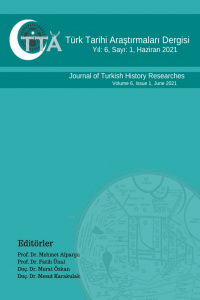Soğuk Savaş Sırasında Sovyetler Birliği’nde Resmi ve Gayriresmi İslam
Sovyet rejimi kuruluşundan beri medrese, cami ve dergâh gibi
kurumları yok ederek ve İslam alimlerine ve imamlara karşı tedbirler
alarak Müslümanları baskılamıştı. İkinci Dünya Savaşı’nın başlamasıyla,
Stalin asker toplamak ve Nazilere karşı savaşı meşru kılmak amacıyla
Müslüman ulemanın desteğine ihtiyaç duydu. Diğer dini otoriterler
birlikte Müslüman ulema Sovyetleri devlet tarafından tanınma
karşılığında desteklediler. Bunun sonucunda akredite bir Müslüman
alim grubu oluştu ve takip eden on yıllarda da etkinliğini sürdürdü. Bu
akredite oluşum devlet tarafından kurumsallaştırılarak Sovyet rejimini
tehdit etmeyen bir İslam formu ve Müslüman topluluğu oluşturulmak
amaçlandı. Bu süreç sonucunda ortaya çıkan kurumlar her ne kadar
birçok fonksiyon icra etseler de Müslümanların dini ihtiyaçlarını giderme
konusunda yetersiz kaldılar. Sovyet Müslümanları, dini geleneklerini ve
hayat tarzlarını korumak ve yaşatmak amacıyla yasaklı Sufi dergahlarına
ve tarikatlara katılmayı sürdürdü. Bu durum Sovyetler Birliği’nde
kurumsal ve kurumsallaşmamış İslami kurumlar ve devlet otoriteleri
arasında sıkışmış bir İslami yaşamı beraberinde getirdi.
Anahtar Kelimeler:
Sovyetler Birliği’nde İslam, Müslüman azınlıklar, İslam, Din-Devlet İlişkileri, Komünizm
Official and Unofficial Islam in Soviet Union During the Cold War
From its foundation, the Soviet regime had oppressed the Muslims
through eradicating Muslim institutions such as mosques, madrassahs
and shrines and taking measures against Muslim scholars and imams.
When World War II began, the Stalin needed the support of Muslim
ulama to legitimize the war effort against Nazis and mobilize Muslim
soldiers. Muslim ulama, along with the authorities of other religions,
supported the Soviet war efforts in exchange for the recognition of the
state. As a result of this arrangement, an accredited body of Muslim
scholars emerged during the war and remained effective in the
upcoming decades. This accredited body was institutionalized and
utilized by the state to sustain a form of Islam and Muslim population
that do not threaten the regime. While these Muftiates served multiple
functions, they were far away from fulfilling the needs of the Muslim
population. The Soviet Muslims continued to join Sufi shrines and
tariqahs in an attempt to preserve their religious customs and lifestyle.
This situation brought about an Islamic life squeezed in between official
and unofficial institutions and state authorities.
___
- ‘‘Zakon RSFSR Ot 25.10.90 N 267-1 O svobode veroispovedanya,’’ Dokumenty XX veka, http://www.doc20vek.ru/node/3407. ABASHIN, Sergei, ‘‘A Prayer for Rain: Practising Being Soviet and Muslim,’’ Journal of Islamic Studies, 25/2, 2014, pp. 178-200. ALTNURME, Riho, ‘‘Religious Cults, Particularly Lutheranism, in the Soviet Union in 1944-1949,’’ Trames 6/1, 2002, pp. 3-16. BACON, Elizabeth A., Central Asians under Russian Rule: A Study in Cultural Change, Cornell University Press, Ithaca NY 1991. BENNIGSEN Alexandre and WIMBUSH, Enders, Mystics and Commisars: Sufism in the Soviet Union, University of California Press, Berkeley LA 1985. BENNIGSEN, Alexandre and QUELQUEJAY, Chantal-Lemercier, ‘‘‘‘Official’’ Islam in the Soviet Union,’’ Religion State and Society, 7/3, 1979, pp. 148-159. ______, Chantal-Lemercier, Islam in the Soviet Union, Pall Mall Press, London 1967. BENNIGSEN, Alexandre, ‘‘Unrest in the World of Soviet Islam,’’ Third World Quarterly 10/2, April 1988, pp. 770-786. BENNIGSEN, Alexandre and BROXUP, Marie, Islamic Threat to the Soviet State, Routledge, New York 2011. FROESE, Paul, ‘‘Forced Secularization in Soviet Russia: Why an Atheistic Monopoly Failed,’’ Journal of the Scientific Study of Religion, 43/1, (2002), pp. 35-50. HUNTER, Shireen, Islam in Russia: The Politics of Identity and Security, M. E. Sharpe, New York 2000. KHALID, Adeeb, Islam After Communism: Religion and Politics in Central Asia University of California Press, Berkeley LA 2007. Konstitutsiya Soyuza Sovietskykh Sotsialisticheskykh Respublik (Constitution of the SSR), Izdanie TsIK SSSR, Moscow 1937.
- ISSN: 2548-091X
- Başlangıç: 2016
- Yayıncı: Fatih ÜNAL
Sayıdaki Diğer Makaleler
Anadolu’da İlk Türk Beyliklerinin Ermenilerle İlişkileri
Yarkend Hanlığı’nın Siyasi Tarihi
Ortaçağ Kafkas Ticaret Yollarında Arran ve Berde’nin Konumu
Tabgaç Tarihinin Ana Kaynağı Wei-Shu Üzerine
Kök Türk Yazıtlarındaki Kırgız ve Türgiş Seferleri
Erken Dönem Osmanlı Türklerinde İnsan Kurbanı Üzerine Bulgular
Soğuk Savaş Sırasında Sovyetler Birliği’nde Resmi ve Gayriresmi İslam
